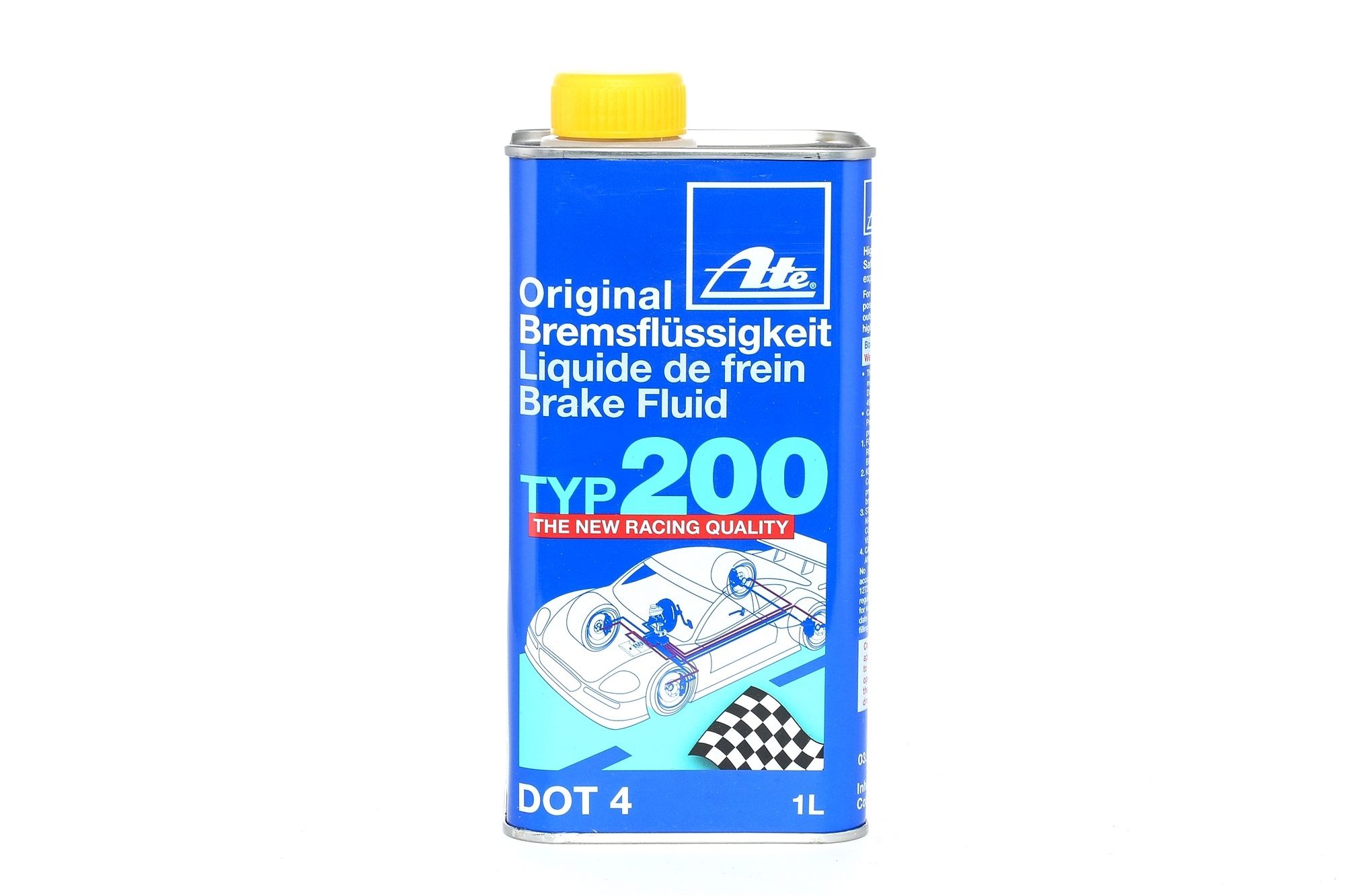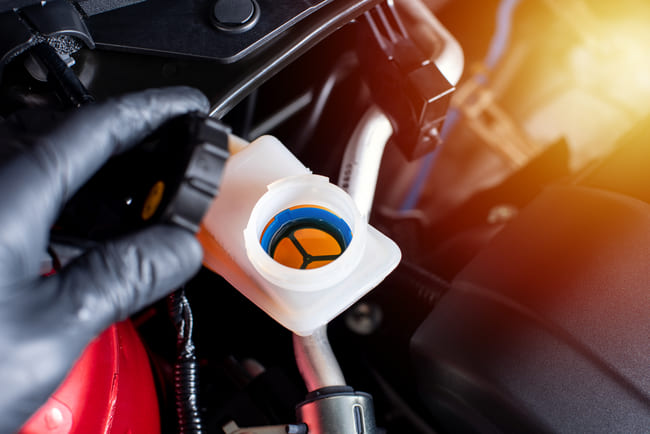Table of Contents
Clutch fluid: location, leak symptoms, and ways to refill the reservoir
Let’s find out what happens if the clutch fluid is low. A lack of clutch fluid will result in a loss of essential hydraulic power required for smooth gear shifting. Therefore you need to make sure that the clutch fluid is at the correct level when attempting to select a particular gear. If you notice any slippage or sluggishness in your gears, it is advisable to schedule an inspection.
Where is the clutch fluid located?
The clutch fluid reservoir, (where you put clutch fluid), is located in the vehicle's engine bay and is responsible for holding the fluid. This is typically under the front bonnet of the vehicle for many models.
 ATE Brake Fluid
1l
ATE Brake Fluid
1l




If the fluid level is low or there is a malfunction in the hydraulic system, the clutch fluid symbol will light up on the dashboard, indicating the necessity for inspection and potential maintenance. The symbol may resemble a gear shift with a small reservoir on top, or it could depict a clutch, typically in the shape of a circle, but may vary slightly depending on the make and model of your vehicle.

Failure to heed this warning could result in clutch slippage, difficulty shifting gears, or complete clutch failure.
How to check clutch fluid
Check the clutch fluid reservoir by accessing the engine bay. Ask a friend to depress the clutch pedal while you monitor the fluid level. Be sure to check the reservoir tank and its adjacent components for any signs of fluid leakage. If you find a leak, get a matching car part or seek assistance from a qualified professional.
Low clutch fluid symptoms
Low clutch fluid will cause insufficient hydraulic pressure, which will result in:
- difficulty shifting gears
- potential clutch slippage
- damage to the clutch system
If the clutch fluid is low, it can cause several issues within the car clutch system. One of the primary problems is the decrease in hydraulic pressure, which makes shifting gears more challenging and results in rough or failed gear changes. When the clutch pedal is pressed, it may feel spongier than usual, indicating that the necessary pressure for smooth operation is not being maintained.
Low levels of fluid in the clutch system can cause the clutch to slip, which means it may not fully engage with the engine's flywheel. This can result in loss of power and accelerate wear and tear on important components. It is crucial to promptly address low fluid levels to maintain the system's performance and longevity. Doing so will ensure that the vehicle operates smoothly and reliably.
Clutch fluid leak symptoms
Over time, the seals in your car's clutch master cylinder degrade, potentially leading to leaks of brake fluid around and above the clutch pedal.
One of the most typical indicators of a clutch fluid leak is difficulty in shifting smoothly or engaging gears at all. If the clutch pedal feels soft or spongy when pressed, it could indicate a lack of hydraulic pressure due to fluid loss. Fluid puddles under your vehicle could be a sign of an active leak. This is particularly concerning if you smell a burning odour when using the clutch, which may suggest fluid dripping onto hot engine parts.
These signs are crucial and require prompt attention to prevent further damage and ensure safe vehicle performance.
How to top up clutch fluid
Topping up clutch fluid is a relatively straightforward process – just remove the cap and fill until the fluid is between the two markers.
Firstly, locate the clutch fluid reservoir; it's typically near the brake fluid reservoir. Remove the cap and check the fluid level; it should be between the minimum and maximum marks. If the level is low, add the appropriate type of clutch fluid for your vehicle until it reaches the maximum mark.
 CASTROL Brake Fluid
1l
CASTROL Brake Fluid
1l
 A.B.S. Brake Fluid
0,25l
A.B.S. Brake Fluid
0,25l
 ATE Plug, brake fluid reservoir
ATE Plug, brake fluid reservoir
 ATE Expansion Tank, brake fluid
ATE Expansion Tank, brake fluid

After you have refilled the clutch fluid, securely replace the cap and make sure it's tightly sealed. Finally, test the clutch pedal to ensure it feels firm and responsive before driving the vehicle.

Is brake and clutch fluid the same?
Simply put, yes. Clutch fluid isn't a distinct fluid but rather brake fluid used in the hydraulic clutch system. When you press the clutch pedal, fluid from the master cylinder moves to the slave cylinder, engaging the clutch. Upon release, the fluid returns to the master cylinder.
Clutch fluid FAQ
What is clutch fluid?
Clutch fluid is actually just brake fluid. It's stored in the clutch master cylinder and helps engage the clutch when you press the pedal.
How do you bleed clutch fluid?
Locate the clutch fluid reservoir and bleeder valve. Attach a clear plastic hose to the bleeder valve, positioning the other end in a container. Have a helper depress the clutch pedal, while you loosen the valve slightly to release old fluid and air bubbles. Tighten the valve and repeat until clear fluid flows through the hose.
How much does clutch fluid replacement cost?
The cost of clutch fluid replacement in the UK can vary depending on several factors, including the make and model of the vehicle, the location and reputation of the service provider, and any additional services required. On average, you can expect to pay anywhere from £50 to £150 for clutch fluid replacement.
Top products related to this topic:











